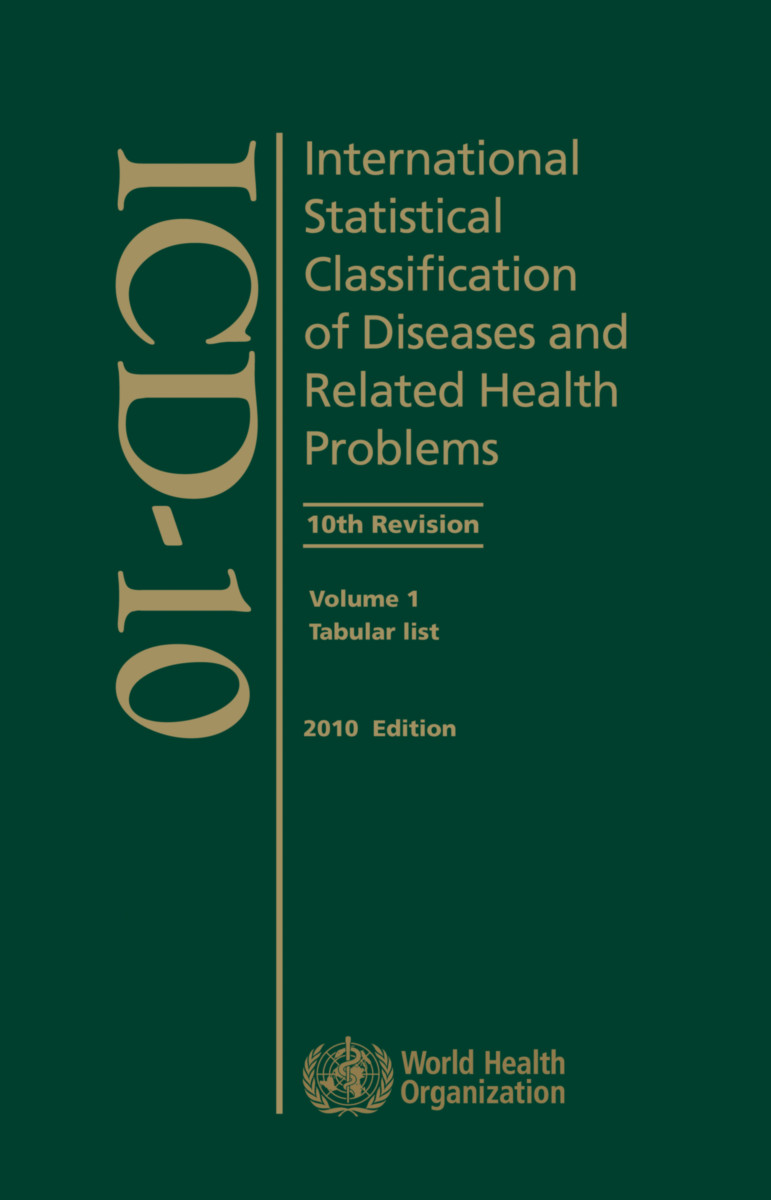The International Statistical Classification of Diseases and Health Related Problems ICD-10 Edition 2
- Publisher
World Health Organization - Published
1st April 2005 - ISBN 9789241545402
- Language English
*Intuitive and easy-to-use interface;
*Simple to navigate - complete with its own browser and hypertext links;
*Fully searchable with every word number and alphanumeric indexed;
*Keyword searching and user-defined search facility;
*Versatile format that can be annotated with user's notes;
*Extracts from ICD-10 can be printed and copied into other applications;
*Small file size, which will remain compressed after installation.
This new edition of WHO's International Statistical Classification of Diseases and Related Health Problems 10th Revision (ICD-10) has been fully updated. Originally published in the early 1990s ICD-10 now incorporates all updates and other changes to this core health classification since 1996 up to end 2003.
In 2000 WHO formed an international panel to review and collate all adjustments to the ICD-10 proposed by many institutions around the world. Panel members consult several times a year and this definitive second edition of ICD-10 is the result of their work. The new edition has hundreds of updates and includes new diseases such as SARS to ensure that the classification is entirely suited to today's needs.
Improvements have been made to the rules and guidelines for mortality coding making them easier to implement and which will result in the improved comparability of international mortality statistics. In addition, there are many additions and changes to the alphabetical index resulting in some 60 additional pages making it far more comprehensive than that of the first edition.
I - Certain infectious and parasitic diseases
II - Neoplasms
III - Diseases of the blood and blood-forming organs and certain disorders involving the immune mechanism
IV - Endocrine nutritional and metabolic diseases
V - Mental and behavioural disorders
VI - Diseases of the nervous system
VII - Diseases of the eye and adnexa
VIII - Diseases of the ear and mastoid process
IX - Diseases of the circulatory system
X - Diseases of the respiratory system
XI - Diseases of the digestive system
XII - Diseases of the skin and subcutaneous tissue
XIII - Diseases of the musculoskeletal system and connective tissue
XIV - Diseases of the genitourinary system
XV - Pregnancy childbirth and the puerperium
XVI - Certain conditions originating in the perinatal period
XVII - Congenital malformations deformations and chromosomal abnormalities
XVIII - Symptoms signs and abnormal clinical and laboratory findings not elsewhere classified
XIX - Injury poisoning and certain other consequences of external causes
XX - External causes of morbidity and mortality
XXI - Factors influencing health status and contact with health services
XXII - Codes for special purposes
World Health Organization
World Health Organization is a Specialized Agency of the United Nations, charged to act as the world's directing and coordinating authority on questions of human health. It is responsible for providing leadership on global health matters, shaping the health research agenda, setting norms and standards, articulating evidence-based policy options, providing technical support to countries, and monitoring and assessing health trends.


